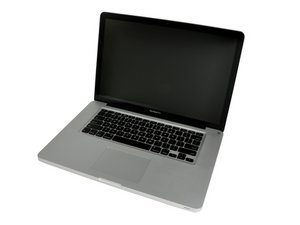Can't boot to SSD when installed in primary
I have a MacBook Pro 15" late 2011. I am trying to upgrade the HDD to a SSD.
What I've done:
Cloned original HDD using CCC and the SSD was attached via a USB adapter. Prior to using CCC I formatted the SSD to Mac OS Extended Journaled and set the partition to "1". After CCC completed I changed the boot drive to the SSD while the HDD was still installed internally via the startup disk utility. Everything functioned properly when booting from the SSD through USB. I swapped the HDD (internal) for the SSD; Started the MacBook and all I receive is the flashing folder with the question mark.
The firmware on the SSD is up to date and I have also made sure my Boot ROM Version and SMC Version are the most up to date via the apple website.
The SSD is a Crucial M500 series.
Software:
OS X 10.9 (13A603)
Hardware:
Model Name: MacBook Pro
Model Identifier: MacBokPro8,2
Processor Name: Intel Core i7
Processor Speed: 2.4 GHz
Number of Processors: 1
Total Number of Cores: 4
L2 Cache (per Core): 256 KB
L3 Cache: 6MB
Memory: 16 GB
Boot ROM Version: MBp81.0047.B27
SMC Version (system): 1.69f4
Это хороший вопрос?

 2
2  1
1 
 970
970 
12 Комментариев
When placing the SSD internally and attaching the HDD externally via USB I still receive the blinking folder with the question mark. I have also held down the 'Option' butt upon boot up and the only boot option it will allow me to select is to bot via network.
из ldjohnson7787
Just to be clear here you can't even see the USB connected HD now even when you use the boot up option selection - Correct? If that is the case something else is a miss here. While your SATA cable may need replacing your USB connected HD should be accessible now. Do you have it externally powered (AC unit)? It could be the single USB port is not able to offer enough power to spin it up given HD's age. Focus on getting the HD going first so we can diagnose the SSD and the SATA cable issue.
из Dan
Correct, once the HD is removed from the internal slot I can not see it. The USB adapter is the ifixit as seen here Universal Drive Adapter
из ldjohnson7787
I believe the fact that I canot see the HD using the external USB adapter might be because I don't have a jumper for it. I think that without a jumper it is supposed to be setup as the primary drive. Unfortunately I cannot test this as I don't have a store or jumper readily available. I have ordered a replacement cable from the newer line up and when it arrives I will update. But if you might have any more suggestions that I could try until then it would be greatly appreciated.
из ldjohnson7787
SATA drives don't need jumpers like older PATA drives do to configure the odering of the drive. They often do have a SATA I/O speed jumper if the system the drive is going into is slower than what the drive normally goes at {i.e. SATA III (6.0Gb/s) drive going into a SATA I (1.5Gb/s) or SATA II (3.0Gb/s) system. In this case this is not the problem.
из Dan
Показать 7 больше комментариев